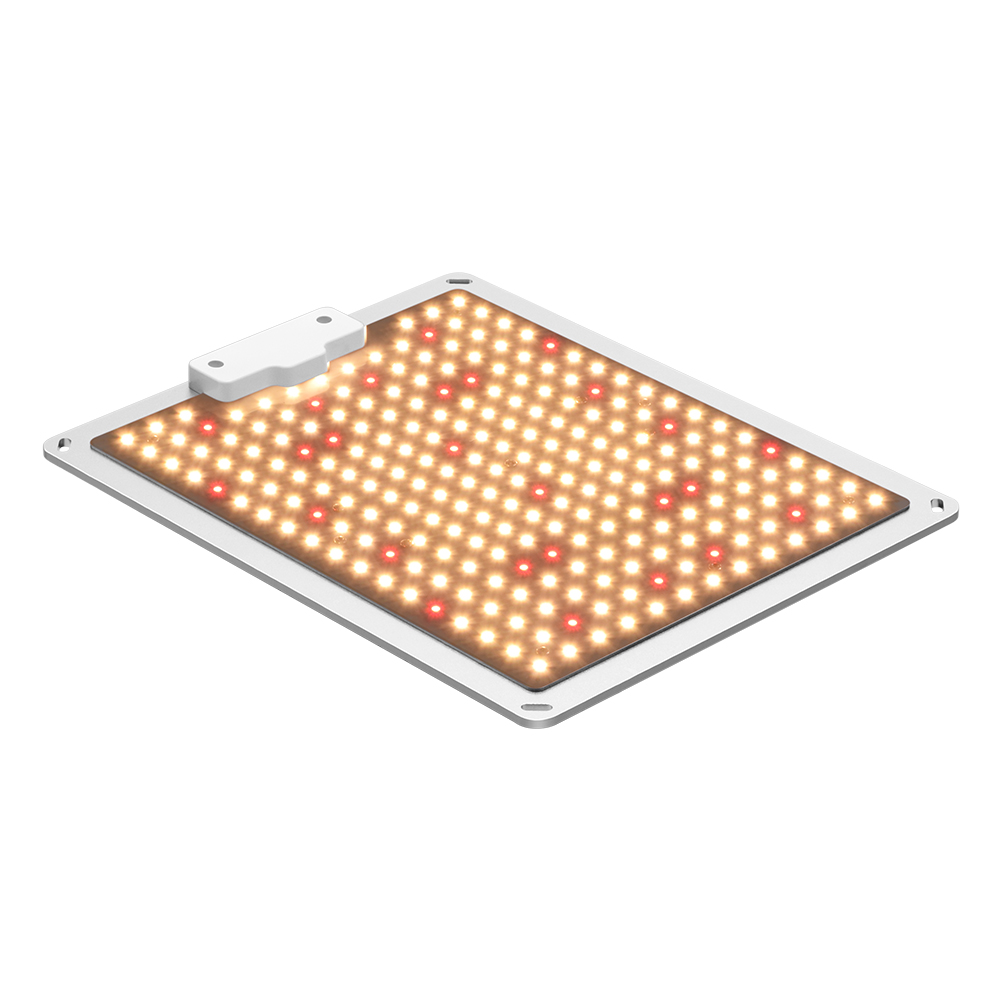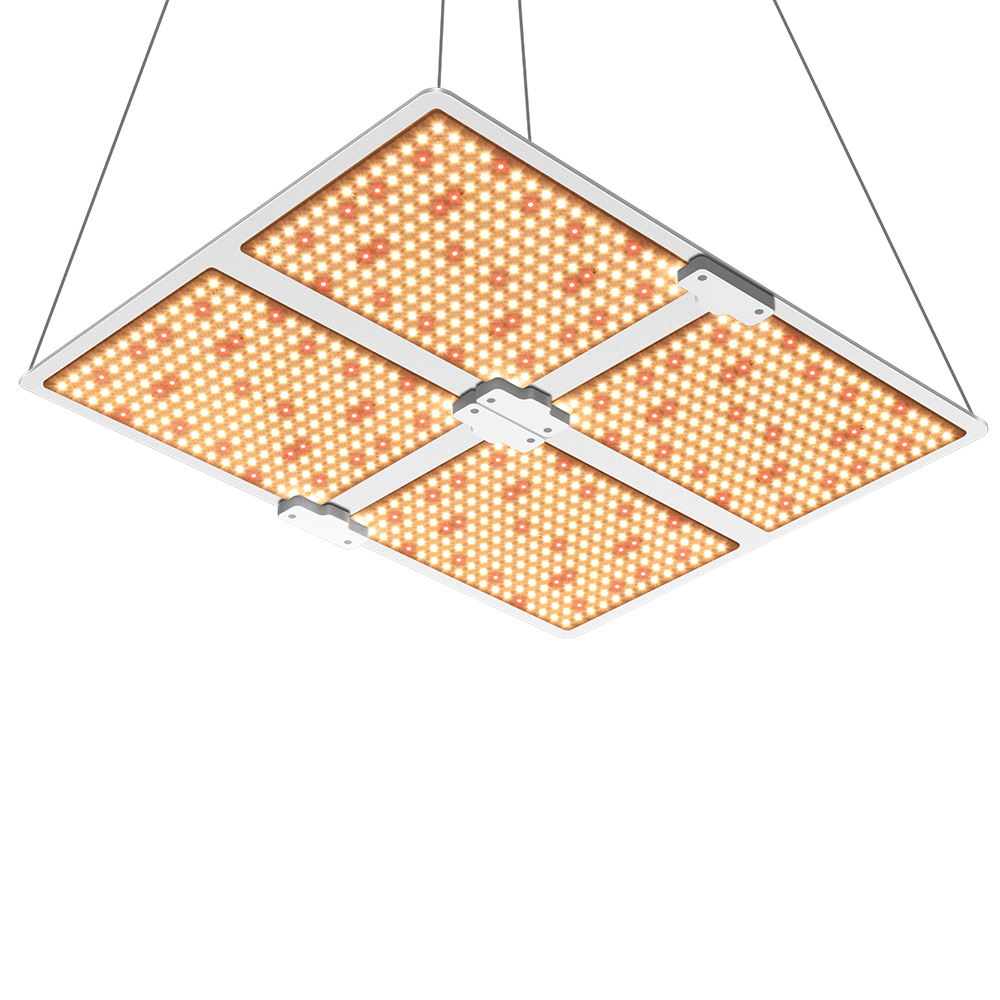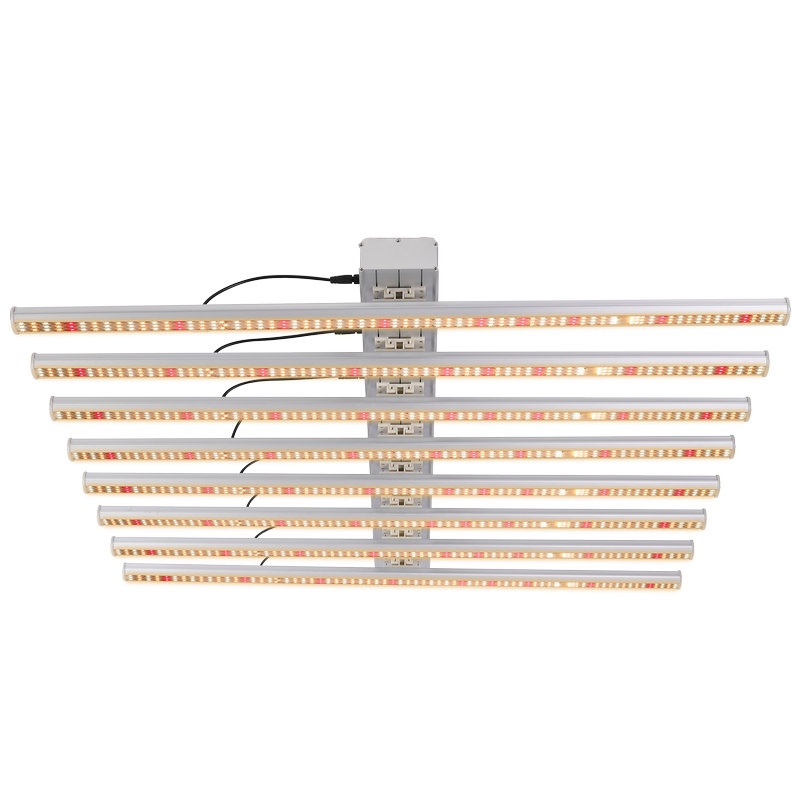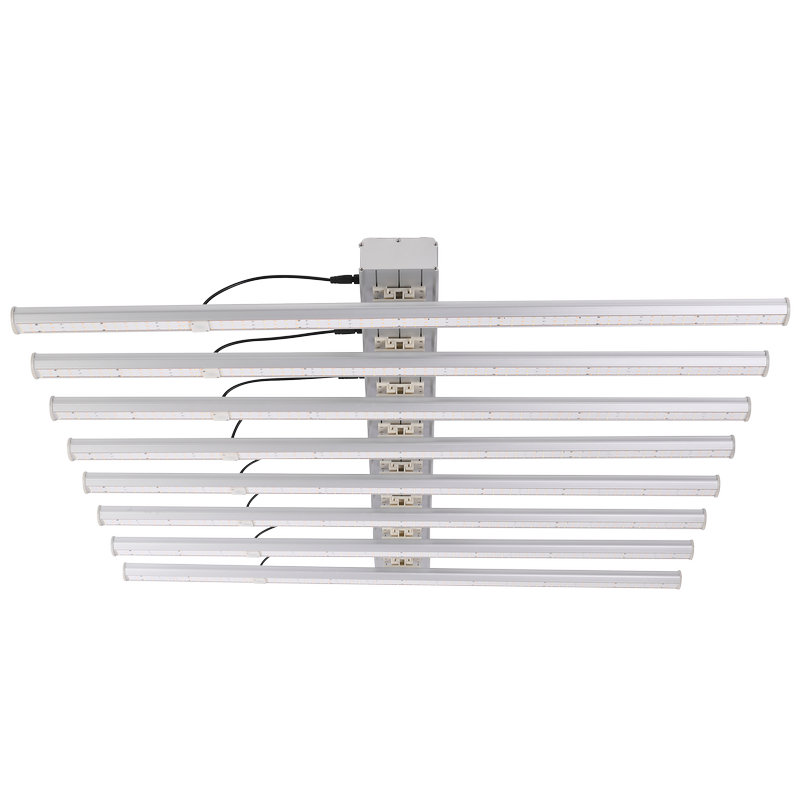How to choose a commercial led grow light?
2021-05-06
Most lighting companies claim that their commercial LED grow lights have a unique structure, spectral design or long warranty period, which can provide the best growth light for plant growth.
The type of commercial lighting you need will also be restricted by your environment. The luminaires for greenhouse lighting should have the smallest overall dimensions and try not to block natural light. Vertical plant racks require lighting equipment to be located high enough above the plant canopy, and must be separated by a certain distance to obtain the best uniformity.
In this article, we will explore the types of commercial grow lights available and provide you with the best buying advice.
What is a commercial LED grow light?
Commercial LED grow lights are lamps that contain light-emitting diodes to provide lighting for growing plants. These lamps are installed above the plant canopy of a greenhouse or indoor farm. Commercial LED grow lights must be able to withstand harsh environments and are usually used in controlled environment agriculture.
How to choose the best commercial LED grow light?
When choosing a commercial LED growth lamp, there are many characteristics to consider. First, you must decide what you want to grow. Before deciding what to grow, you also need to consider the following factors before buying an LED grow light.
Growth light effect
Growth lamp efficacy, also called photosynthetic photon efficacy or PPE, is the output of PAR (photosynthetic effective radiance) photons divided by the wattage of the lamp. The efficacy of the growth lamp has quickly become one of the main indicators for buyers to evaluate products.
The higher the PPE, the better the effect of reducing power consumption, but this indicator also has its limitations. For example, PPE only considers photons in the PAR spectrum (not including wavelengths such as far-red light).
Some buyers will use photosynthetic photon efficacy as the only reference indicator for purchasing lamps, but we do not recommend this. PPE does not include the spectrum impact, nor can it represent the quality of the luminaire. In practical applications, the importance of these two aspects is far greater than the power consumption problem represented by PPE.
Heat output of grow light
A long time ago, there was a saying: LED grow lights do not generate heat. Although they are much more efficient than traditional HPS planting lights, they are not.
Generally speaking, we recommend not to worry about the difference in heat output between LED lamps. But you have to consider the advantages and disadvantages of the low-calorie situation.
In cold climates, some greenhouse owners find the heat emitted by HPS lamps more beneficial. This kind of heat does have certain benefits, but the lamp is not a reliable heat source because the heat is difficult to control. HPS grow lights will generate heat in various parts of the entire greenhouse, affecting plant growth in an uncontrolled way.
Controlling the heat can achieve better product quality. Commercial LED grow lights are the best choice, but if you want to use the extra heat generated by the lamps in a cold climate, regardless of other negative effects, you may need to look for more Multi-traditional plant growth lamp technology.
Easy to install
Commercial LED grow lights are installed above the plant canopy, and depending on the distance between your shed roof and the plants, you need to ensure that the grow lights can be easily installed and replaced.
In the greenhouse, most commercial LED grow lights are installed on pillars running through the top of the facility. In indoor planting rooms, hangers, pulleys are usually used to attach to pillars, or to vertical plant racks.
Generally, it is smart to understand the manufacturer's installation process before buying. A good manufacturer must also have a well-thought-out system that is easy to install, replace and expand.
Manufacturer's success
Before buying a commercial LED grow light, it’s best to look at the company’s customer reviews. However, there will be some new starts, but good companies may not have much business records. In this case, do not use performance as the only measure. They are most likely to bring you unexpected surprises.
If you decide to choose a new company, then based on the fact that they do not yet have a good transaction record, their offer must also have a reasonable discount.
Warranty Standards for Grow Lights
Nowadays, the standard warranty period for grow lights is generally 5 years. Some good quality companies only have a 3-year warranty. If you are going to make a large investment, you should consider reducing business risks through a warranty period that meets your business needs.
These suppliers will tell you: "We have cracked the code to make your plants high-yielding and high-quality!"
The problem is that no commercial LED grow light manufacturer can guarantee that its products will allow plants to get the best growth light in every environment.
First, different plants need different spectra to thrive. Even different grape varieties respond differently to the spectrum.The type of commercial lighting you need will also be restricted by your environment. The luminaires for greenhouse lighting should have the smallest overall dimensions and try not to block natural light. Vertical plant racks require lighting equipment to be located high enough above the plant canopy, and must be separated by a certain distance to obtain the best uniformity.
In this article, we will explore the types of commercial grow lights available and provide you with the best buying advice.
What is a commercial LED grow light?
Commercial LED grow lights are lamps that contain light-emitting diodes to provide lighting for growing plants. These lamps are installed above the plant canopy of a greenhouse or indoor farm. Commercial LED grow lights must be able to withstand harsh environments and are usually used in controlled environment agriculture.
How to choose the best commercial LED grow light?
When choosing a commercial LED growth lamp, there are many characteristics to consider. First, you must decide what you want to grow. Before deciding what to grow, you also need to consider the following factors before buying an LED grow light.
Growth light effect
Growth lamp efficacy, also called photosynthetic photon efficacy or PPE, is the output of PAR (photosynthetic effective radiance) photons divided by the wattage of the lamp. The efficacy of the growth lamp has quickly become one of the main indicators for buyers to evaluate products.
The higher the PPE, the better the effect of reducing power consumption, but this indicator also has its limitations. For example, PPE only considers photons in the PAR spectrum (not including wavelengths such as far-red light).
Some buyers will use photosynthetic photon efficacy as the only reference indicator for purchasing lamps, but we do not recommend this. PPE does not include the spectrum impact, nor can it represent the quality of the luminaire. In practical applications, the importance of these two aspects is far greater than the power consumption problem represented by PPE.
Heat output of grow light
A long time ago, there was a saying: LED grow lights do not generate heat. Although they are much more efficient than traditional HPS planting lights, they are not.
Generally speaking, we recommend not to worry about the difference in heat output between LED lamps. But you have to consider the advantages and disadvantages of the low-calorie situation.
In cold climates, some greenhouse owners find the heat emitted by HPS lamps more beneficial. This kind of heat does have certain benefits, but the lamp is not a reliable heat source because the heat is difficult to control. HPS grow lights will generate heat in various parts of the entire greenhouse, affecting plant growth in an uncontrolled way.
Controlling the heat can achieve better product quality. Commercial LED grow lights are the best choice, but if you want to use the extra heat generated by the lamps in a cold climate, regardless of other negative effects, you may need to look for more Multi-traditional plant growth lamp technology.
Easy to install
Commercial LED grow lights are installed above the plant canopy, and depending on the distance between your shed roof and the plants, you need to ensure that the grow lights can be easily installed and replaced.
In the greenhouse, most commercial LED grow lights are installed on pillars running through the top of the facility. In indoor planting rooms, hangers, pulleys are usually used to attach to pillars, or to vertical plant racks.
Generally, it is smart to understand the manufacturer's installation process before buying. A good manufacturer must also have a well-thought-out system that is easy to install, replace and expand.
Manufacturer's success
Before buying a commercial LED grow light, it’s best to look at the company’s customer reviews. However, there will be some new starts, but good companies may not have much business records. In this case, do not use performance as the only measure. They are most likely to bring you unexpected surprises.
If you decide to choose a new company, then based on the fact that they do not yet have a good transaction record, their offer must also have a reasonable discount.
Warranty Standards for Grow Lights
Nowadays, the standard warranty period for grow lights is generally 5 years. Some good quality companies only have a 3-year warranty. If you are going to make a large investment, you should consider reducing business risks through a warranty period that meets your business needs.
Some growers want to make quick profits instead of accumulating profits over the long term, so if this is the case, a lower upfront investment may make more sense than a longer warranty period.




X
We use cookies to offer you a better browsing experience, analyze site traffic and personalize content. By using this site, you agree to our use of cookies.
Privacy Policy




